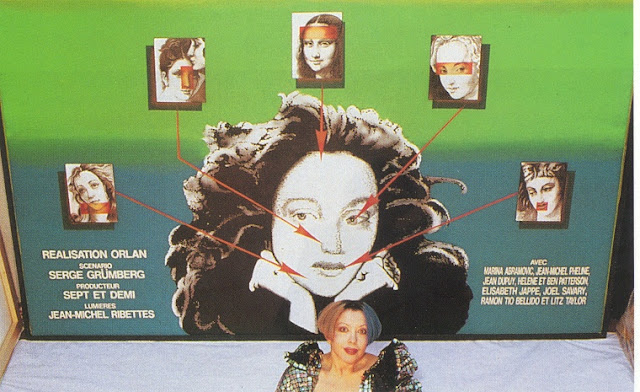Week 4 - MedTech + Art
In this week’s lecture, the professor discusses how medical technology and arts intersect in contemporary arts. She illustrates the relationship between MedTech and arts with several examples such as anatomy as a form of art and how people use X-rays and MRI (Magnetic Resonance Imaging) to picture and explore organs as well as human body, where the reading material further amplifies that MRI is a visually captured form of sounds (Casini). One of the most impressive things among all to me is plastic surgery which I personally think that integrates our two topic elements perfectly.
Plastic surgery was not invented within the past few centuries, but thousands of years ago about 2000 B.C. in India and Egypt (Salcido). The progress of plastic surgery did not improve until the very recent 100 years when the surgeries mainly served for patients in the wars.
During this time emerged an artist who used herself on operations and recorded the whole precess. Her name is Orlan and she was born in France in the mid 20th century. What’s even more special about her surgeries is that her goal is to make her facial features to look like Renaissance women from past artworks. However, her results indicated limited beauty and that how she raised women’s awareness that there is no point pursuing so-called beauty standards made by males which I cannot agree more.
 |
| This is Orlan's plan of deriving her facial features from Renaissance women from famous artworks. |
Nowadays, plastic surgery is considered as a cosmetic process and a way to change appearance to fit the modern beauty standards still. In 2013’s Miss Korea’s competition, netizens were surprised by the almost uniform pictures of all beauty pageant contestants. Since South Korea has a well-known plastic surgery industry, International netizens started questioning if the beauty is artificial or not and if it is, what is the meaning of the contest.
 |
| A capture of headshots of beauty pageant contestants of 2013 Miss Korea. |
As far as I’m concerned, there is no standardized beauty, but existing only different perspectives and tastes. Beauty standards keep changing over time and time. So though I understand people who get plastic surgeries to look pretty, I do not encourage that since it removes people's uniquenesses and their own special identities. Just like arts, there is no good art or bad art, but only people who understand and enjoy it and those who do not. This I assume, is a “by-product” of the development of MedTech’s integration with art.
Sources:
Salcido, Jannelle. “THE HISTORY OF PLASTIC SURGERY”. PlasticSurgery.com 2010. Web. 29 Apr. 2017.
Robinson, Randolph. “The History of Cosmetic Surgery”. RobinsonCosmeticSurgery.com 7 Aug. 2015. Web. 29 Apr. 2017.
Zimmerman, Neetzan. “Plastic Surgery Blamed for Making All Miss Korea Contestants Look Alike”. Gawker. 25 Apr. 2013. Web. 29 Apr. 2017.
“Orlan”. SlideShare. 19 Oct. 2008. Web. 29 Apr. 2017.
Casini, Silvia. Magnetic Resonance Imaging (MRI) as Mirror and Portrait: MRI Configurations between Science and the Arts. PDF. Web.


Comments
Post a Comment